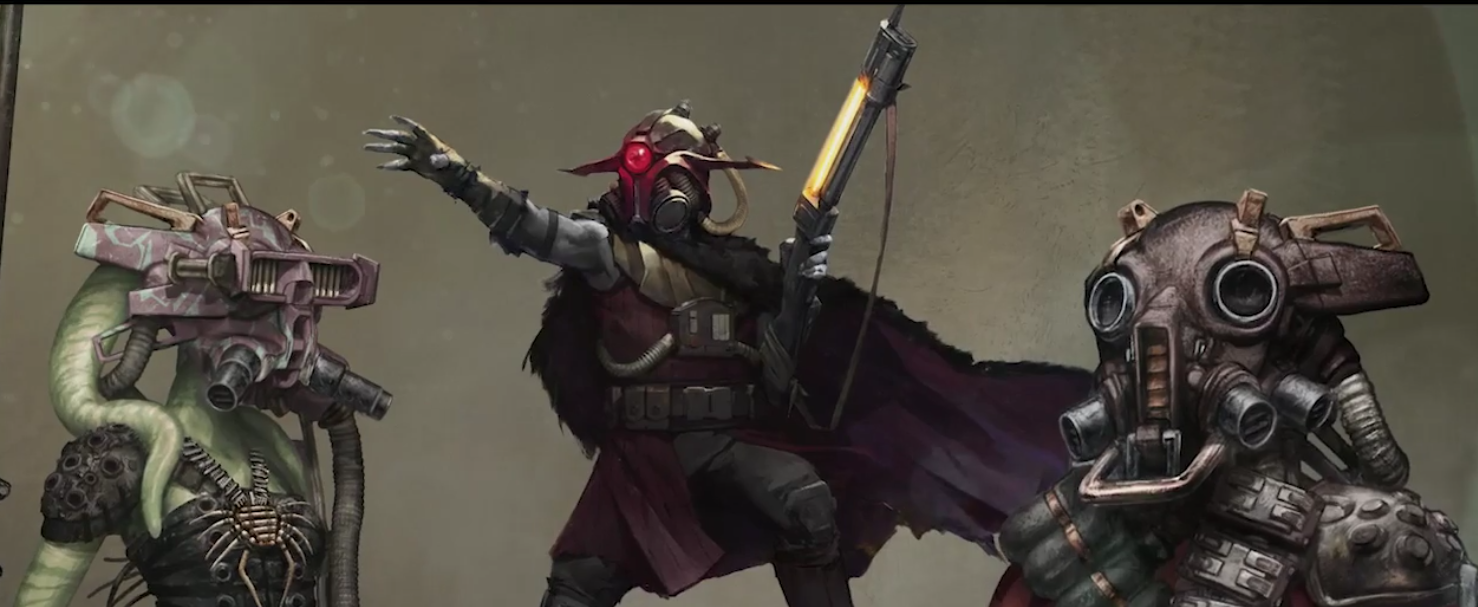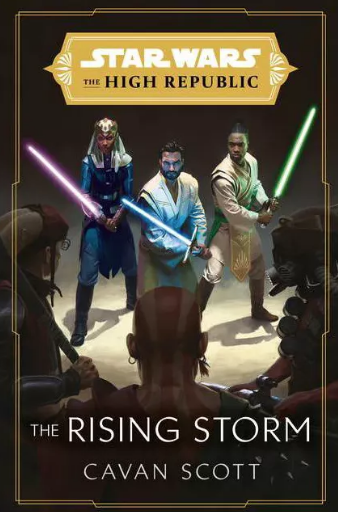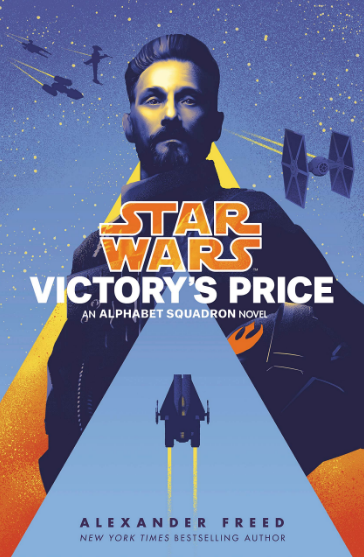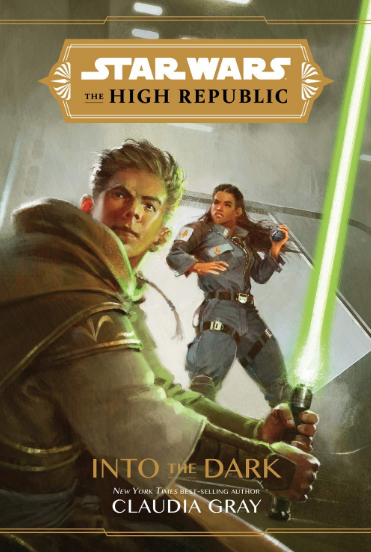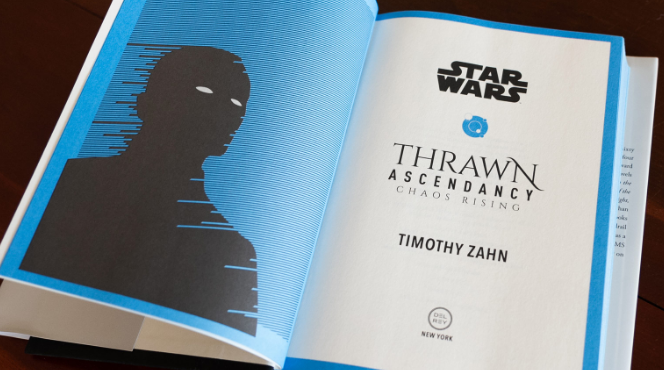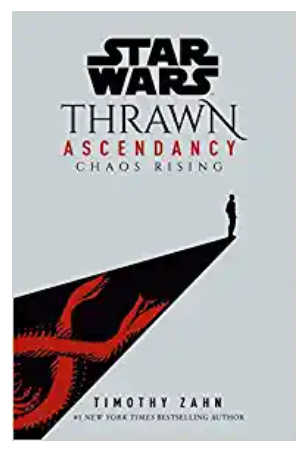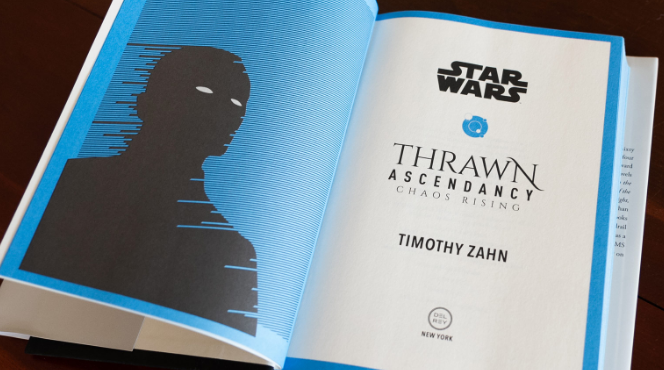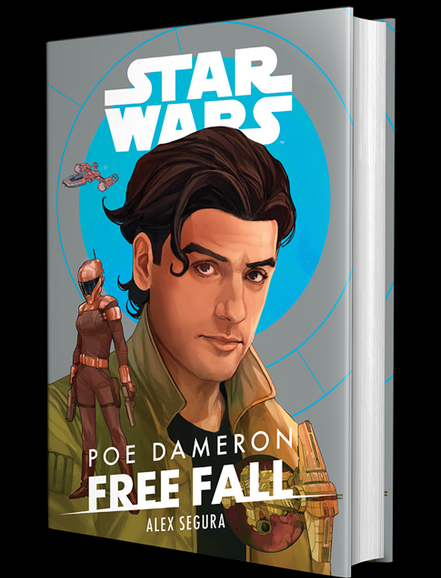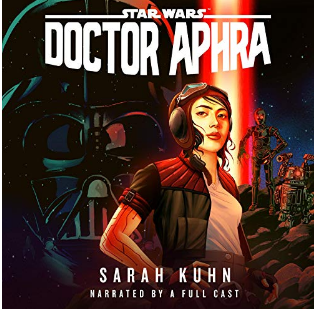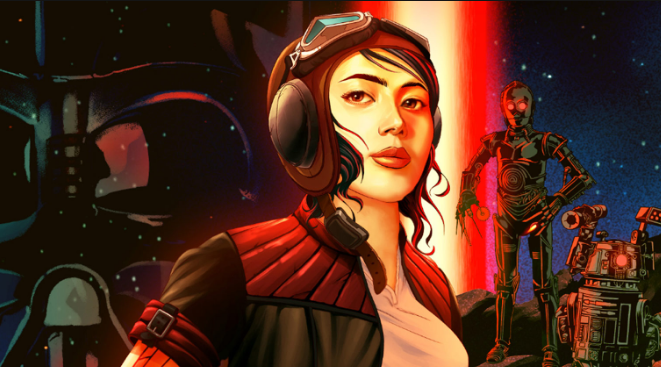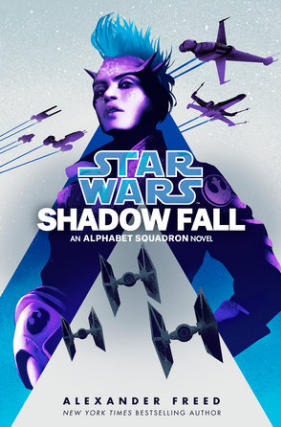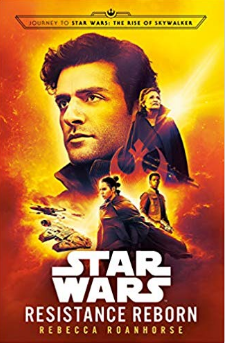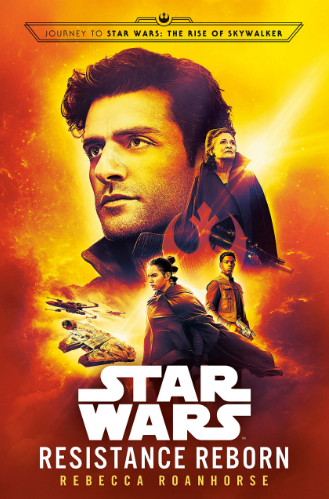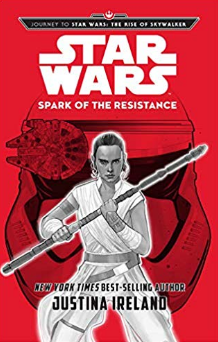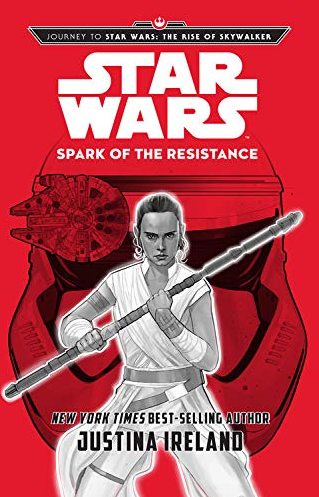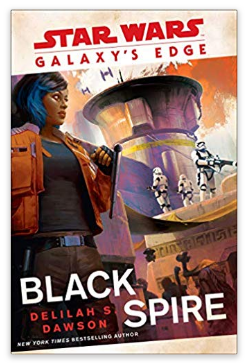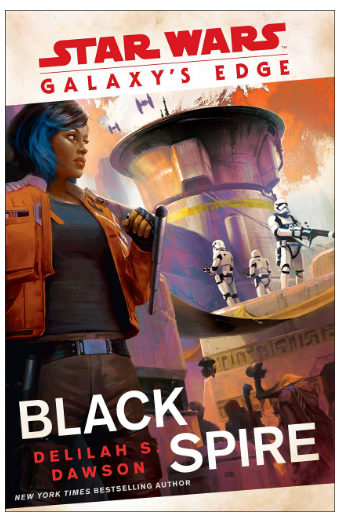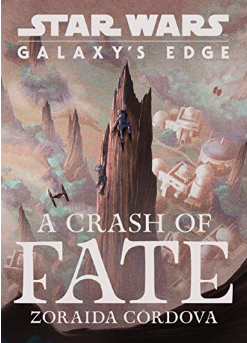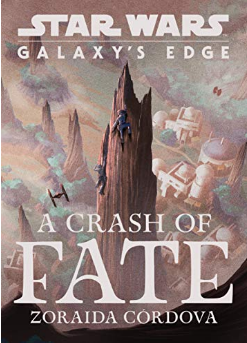Author Archives: Jacob Burdis
Star Wars: The High Republic: The Rising Storm No-spoiler Review
However, with the release of Cavin Scott’s The Rising Storm, the strategy of the onslaught of novels, young adult novels, and junior readers is becoming a bit more clear. While several young adult novels have been released since The Light Of The Jedi (the first of the The High Republic novels), it is apparent that Scott’s latest novel is meant to be the direct sequel. Even though I haven’t seen anything that indicates this novel series is a trilogy, The Rising Storm definitely reads like “the middle book”, spending an inordinate amount of time on plot development and ending with a highly unsatisfying cliff hanger. Additionally, reading this novel without first reading The Light Of The Jedi will result in a high amount of confusion and missing context.
Star Wars: Victory’s Price No-spoiler Review
Star Wars: The High Republic: Into The Dark No-spoiler Review
Star Wars: The High Republic: Light Of The Jedi No-spoiler Review
2021 is definitely an exciting time to be a Star Wars fan! In December 2020, Disney announced a staggering list of new Star Wars media that will be debuting over the next few years. As much as I am excited to dive deeper into stories showcasing my favorite characters from the Skywalker Saga, I am equally excited to branch into new timelines in the Star Wars universe.
Star Wars: The High Republic: Light Of The Jedi is the first of several novels to explore a completely new era of the Star Wars universe. Set more than 200 years before The Phantom Menace, this novel explores what may be considered the renaissance of The Republic and The Jedi Order.
During an era of peace, prosperity, and progress, the Galactic Republic, in close partnership with the Jedi Order, works to expand its influence across the frontiers of the galaxy into the Outer Rim. In a grand gesture of unity, peace, and collaboration, Chancellor Lina Soh is about to unveil the Starlight Beacon to the galaxy. The first of its kind, the massive space station was built to extend all of what’s best about the republic into the Outer Rim worlds, including the largest contingent of Jedi outside of Coruscant.
But shortly before the grand opening of the station, a monumental tragedy occurs, beginning in the Hetzal system. Seemingly out of nowhere, debris from the ship The Legacy Run appears in the system travelling at incredible speeds towards the planets and the largest star. Luckily, a group of Jedi and Republic responders en route from the Starlight Beacon are close enough to prevent the disaster from destroying the entire system. But debris from the ship starts appearing in other systems throughout the Outer Rim, and some systems, including Eriadu, aren’t so lucky and suffer major loss and destruction.
Chancellor Soh immediately creates a task-force of the finest the Republic and the Jedi have to offer to investigate the cause of the disaster to prevent anything like it from happening again. During the investigation, they discover more and more evidence connecting the disaster to a sinister group of marauders called the Nihil, operating in the Outer Rim. It becomes clear that the Republic has little chance of success in expanding peace and prosperity through the Starlight Station while the Nihil are allowed to operate in the region. But the Nihil prove to be dangerous, elusive, and somehow capable of navigating hyperspace in ways thought impossible. Did the Republic bite off more than it could chew by aggressively expanding into the Outer Rim? Are they prepared to deal with the growing threat of the Nihil?
As the first Star Wars novel set in an entirely new era, I think I gave it more critical liberties than I have given other Star Wars novels I’ve reviewed. The fact is, I wanted it to be really good, so I admittedly may have adorned some rose-colored glasses. But if I’m being truly honest with myself, the novel was a little better than mediocre. The most jarring part of the novel was how seemingly expendable so many of the characters were. Too many of the new characters introduced died, and several relatively early in the novel. It made it difficult for me to want to invest in any of the remaining characters, not knowing when their untimely demise would come.
The redeeming qualities of the novel were its explorations of the innovations in hyperspace travel and medicine. One of the subtleties often not picked up on in the films is the progression from hyperspace lanes in the prequels to on-board navi-computers in the following films, allowing greater flexibility in traveling through hyperspace. This novel begins to hint at how these new discoveries were made, which is fun to see. The novel also refers to bacta as a new miracle medicine with the promise of healing those seemingly beyond death. It’s fun to put some of these technologies into perspective
All in all, despite its shortcomings, I believe this novel is a must read as a foray into the newest era of Star Wars storytelling. Here’s to hoping that the following novels can provide a bit more sustenance.
Click Here or the image below to pick this up via hardcover or digital audio. We would like to thank Disney Lucasfilm Press/Penguin Random House Audio for providing the review sample.
Thrawn Ascendancy Chaos Rising ON SALE TODAY!
Star Wars: Thrawn Ascendancy Chaos Rising No-Spoiler Review
I’ll begin this review the same way I’ve begun my reviews for the previous Thrawn Trilogy. If you are reading this review to decide whether to read Thrawn Ascendancy Chaos Rising, let me save you some time. Stop reading this review immediately, go grab a copy, and read it. There are no caveats or conditions. This novel is simply a must-read for any and every Star Wars fan. Really, it’s that good.
Thrawn Ascendancy Chaos Rising is the first book in the newly announced trilogy by none other than Timothy Zahn. As a reminder, Zahn originally created the Thrawn character as part of his original trilogy consisting of the novels Heir To The Empire, Dark Force Rising, & The Last Command. Soon after this trilogy was relegated to “Legends” status due to the introduction of the new Canon, Fans were thrilled to learn that Zahn was tasked to reintroduce Thrawn into the official canon. While Zahn’s first canon trilogy presented the backstory about how Thrawn became a Grand Admiral in the Galactic Empire, this trilogy steps back to tell the tale of how Thrawn originally became a leader in the Chiss Ascendancy.
The main events of the novel are set sometime during the Clone Wars era, many years prior to Thrawn being introduced to the Empire. Thrawn has begun to climb the ranks in the Chiss Expansionary Defense Fleet, earning himself the attention from both critics and admirers through his unique and effective, though often misunderstood, military tactics. He, together with one of his greatest admirers Admiral Ar’alani, begin to see patterns of an encroaching threat to the Chiss Ascendancy. Through a series of missions involving piracy investigations, skirmishes with alien forces, and even some espionage, Thrawn becomes convinced that the threat is real and must be stopped.
While Thrawn’s military genius is certainly suitable to handle the impending confrontation, his political ineptitude proves to be a recurring, significant obstacle to his success. And to make matters worse, the current situation bears resemblance to a situation in Thrawn’s earlier career where his political ineptitude led to a devastating failure that nearly ended his career and put the entire Ascendancy at risk. Not only does this failure plague Thrawn, but his critics also haven’t forgotten about the time Thrawn was wrong in a significant way. If Thrawn and his allies can’t win the trust of the Chiss leadership in time, action against the impending threat may be too little, too late.
There is so much to love about Zahn’s approach and style in this novel. SImilar to his previous novels, Zahn masterfully alternated between two separate timelines, progressively interweaving them until they both climaxed during the culminating events of the novel. It is such an artistic and unique way to tell a story. Additionally, Zahn expanded on the culture and philosophy of the Chiss in such a way that they’ve officially taken the top slot as the most badass Star Wars species in my opinion. While Thrawn is uniquely exceptional in many ways, several of the characteristics that set him apart in the Galactic Empire are native to the Chiss way of life.
Not only does Thrawn Ascendancy Chaos Rising contain a fantastic and entertaining story arc, but it basically unlocks potential for an entirely new Star Wars Saga. The Chaos in the Unknown Regions is full of new Aliens and culture, new heroes, and new threats: all the necessary ingredients for a fantastic Star Wars Story.
If I haven’t convinced you to read Thrawn Ascendancy Chaos Rising yet, let me make one final attempt. I have read every single canon novel and junior novel that has come out since Disney purchased the franchise (many of them multiple times). Some of the novels aren’t worth reading. Most of them are very enjoyable and add a considerable element to my understanding and enjoyment of the Star Wars Saga. Every Thrawn novel I’ve read remains at the top of the list. Trust me, it is worth the read. What are you waiting for?
We would like to thank Disney Lucasfilm Press/Penguin Random House Audio/Del Rey for providing the review sample. Click Here to order today!
Star Wars: Poe Dameron Free Fall No-spoiler Review
Star Wars: Poe Dameron Free Fall, the newest addition to the Star Wars Canon, hit shelves in early August. Poe Dameron captured fans’ attention with his lead role in the new film trilogy, in several novels, and his own comic series. But until now, the story of Poe’s history of being a spice runner with Zorri Bliss on Kijimi remained untold.
Most fans will remember the comical exchange in The Rise Of Skywalker when Finn discovers how Poe knows to do all the “shifty stuff” like lightspeed skipping and speeder hot-wiring. On Kijimi, after meeting Zorri Bliss, Poe’s friends are surprised and shocked to learn he used to be, as Finn dubbed him, “Poe Dameron: Runner of Spice.” Poe Dameron Free Fall finally provides some answers about how the son of two heroes of the Rebellion became entangled with the Spice Runners of Kijimi, and somehow escaped that world to become the leader of The Resistance.
The story begins on Yavin IV, where Poe lives a rural life of relative boredom with his widower father. Craving excitement, and acting just as impulsively as he did in the films, Poe seizes an opportunity to pilot a stranded group of smugglers off Yavin IV. Not being one to think things through, Poe quickly realizes his new life with the spice runners isn’t one he can so easily walk away from. And after becoming enamoured with Zorri Bliss, he’s not so sure he wants to leave anyway.
The infamy surrounding the Spice Runners of Kijimi, however, isn’t a facade. As Poe’s affiliation with the group deepens, so does his visibility into the deplorable acts the group performs in order to retain its power. The problem is, his guilt caused by his complicity in these acts grows at about the same rate as his affinity toward Zorri. Is he willing to sacrifice his morals to be together with the one person in the universe he truly connects with? Or is he willing to sever the connection with Zorri in order to do what he knows in his heart is right?
One of the most challenging obstacles that Alex Segura faced when writing this novel was satisfactorily providing a plausible explanation for Poe’s involvement with the spice runners. Poe was certainly rough around the edges when we first met him in The Force Awakens, but we immediately latched onto his good heart. And in the Poe Dameron comics, we learned that his parents were both very influential leaders in the Rebel Alliance. How could one with such a legacy completely turn his back on it. Yet, despite the challenge, Segura effectively provided a realistic, believable story as to how Poe could descend so far from his legacy and still ascend so high in the Resistance.
On another note, the novel included several other key explanations that enhanced my overall understanding of the Star Wars Universe. For example, the novel explained lightspeed skipping in a way that makes a lot more sense than was portrayed in the film. Basically, it requires having previously entered a series of precise coordinates for locations that are difficult to navigate. The pilot, being able to anticipate the upcoming obstacles, gains the advantage in the effort to evade pursuers.
In summary, this novel masterfully provided additional backstory and details that enhanced my overall Star Wars experience. From the start, Poe was one of my favorite characters in the new trilogy. I thoroughly enjoyed learning more about him and his story. I definitely recommend this novel for all Star Wars fans.”
We want to thank Disney Lucasfilm Press for providing this sample for review. Click below to pick this up today!
Star Wars: Doctor Aphra No-spoiler Review
Star Wars: Dr. Aphra is the newest audiobook-only addition to the Star Wars Canon Universe. The story loosely follows the popular Comic series that was released in December, 2016. Up until now, Doctor Cheli Lona Aphra was only known to the most studious Star Wars fans that followed the previously-mentioned comic series. The character was well-received enough to move to the next level of Star Wars fandom by being canonized in novel form.
The story is set sometime soon after the destruction of the first Death Star. Cheli Aphra personally narrates her life story, which is fraught with adventure, passion, risk taking and close interactions with many of our favorite Star Wars characters. Through a string of exciting events, Dr. Aphra becomes a personal attache to none other than Darth Vader. But she quickly learns that this is a very precarious position to fill while remaining alive. Dr. Aphra must fulfill her new master’s bidding, doing everything possible to continually prove her value to him to avoid the fate of those that fail him.
Dr. Aphra is a fantastic, fresh addition to the list of most interesting Star Wars characters. Combine the resourcefulness of Indiana Jones, the ingenuity and confidence of Tony Stark, and the crassness of Deadpool and you get Cheli Lona Aphra. She is exactly the type of character that you are able to cautiously love, slightly despise, and secretly envy all at the same time.
As an audio-only production, the creators went to great lengths to present a full cast of voice actors, and an engaging audio production. The novel jumps around a bit in chronology, which actually really helps keep the listener engaged and interested as the story pieces itself together. Because the story is narrated solely from the perspective of Dr. Aphra herself, it is quite entertaining to listen to her character’s commentary about some of the other heroes we are all familiar with. But, because Aphra could easily be categorized as somewhat neurotic and narcissistic, sometimes her self-praise gets a bit much.
Overall, this audio production was very well done and definitely adds a unique and interesting perspective to the Star Wars universe. I definitely recommend it for all types of fans. It requires no additional knowledge of the comic series, or really any other background other than the original trilogy, so it’s appropriate for all types of fans. Get a copy and give it a listen, you won’t regret it!
We want to thank Random House Audio for providing this sample for review, you can grab this right now at this link or click below! Out Now!
Star Wars: Shadow Fall No-spoiler Review
Star Wars: Shadow Fall is the second novel released in Alexander Freed’s trilogy following Alphabet Squadron’s feud with the elite Imperial 204th “Shadow Wing”. This novel feels very similar to Alexander Freed’s first novel in the Star Wars Canon, Battlefront: Twilight Company in that it follows lesser-known characters’ grueling battles in the war against the Empire. If you are looking for a novel about your favorite Star Wars characters, or lightsaber battles between Jedi and Sith, this probably isn’t the novel for you. However, pick this novel up if you want to explore the moral ambiguity of war within a Star Wars context, or experience larger-scale strategy and tactics between New Republic and Imperial forces.
The novel is set not long after Star Wars; Alphabet Squadron, months after “Operation Cinder”, but still preceding the final Battle of Jakku. Aptly named, Alphabet Squadron is a New Republic Intelligence starfighter squadron consisting of an X-wing, A-wing, B-wing, Y-wing, and U-wing (and for part of the novel they even pick up a vintage V-wing for a time). After a particularly destructive encounter with the 204th over Pandem Nai, Yrica Quell collaborates with General Hera Syndulla (yes that Hera Syndulla) to set a trap to eliminate the threat of Shadow Wing for good.
But like every good plan, much of it goes out the window a few minutes after first contact. Revelations about Quell’s previous involvement with Operation Cinder, along with several other unfortunate events effectively fracture Alphabet Squadron. True to form being the middle of a trilogy, our heroes experience significant setbacks and the novel ends with a significant amount of uncertainty. But it definitely sets the stage for the final novel, which I suspect will climax with a final confrontation at the Battle of Jakku.
One of the original allures of the trilogy for me was the concept of all of my favorite starfighters forming a single, unique unit. While it was thrilling in the first novel to see these fighters work together, the squadron fighting as a whole was basically non-existent in Shadow Fall. Not only that, Freed makes it hard to imagine how the whole squadron will come back together to fight in the final novel. Perhaps this is a tactic to deliver the unexpected, but for me it was a bit of a let-down. That being said, the events and battles of the novel are certainly interesting and set the stage for an epic showdown in the final novel. Similar to the first novel, Freed does a great job of not holding back punches when diving into the brutality, spontaneity, and chaos of war.
When Star Wars: Alphabet Squadron was released, I was sorely disappointed that its release didn’t correspond with a new video game focused exclusively on dogfighting in the Star Wars universe (reboot of Rogue Squadron anyone?). There is a precedent, since Freed’s previous novel Battlefront preceded the release of the Battlefront video game series. However, even though there seems to be no explicit relationship, the upcoming video game Star Wars: Squadrons fits the bill perfectly! Whether or not the game includes any of the epic battles featured in this trilogy, I will certainly be envisioning myself as Wyl Lark in the maneuverable A-wing, or “Blink” executing precision maneuvers as part of the elite 204th TIE Fighter Wing.
Star Wars: Shadow Fall is definitely a worthy read for all Star Wars fans. This trilogy is most suited for those interested in epic starfighter battles, strategy and tactics in war, and those who want to experience a degree of “realism” within the space fantasy.
Post Script:
Short rant ahead, don’t read if you don’t want to know one of the hardest-to-defend mistakes in Star Wars.
I consider myself a Star Wars apologist, defending what others might consider plot holes with cleverly created explanations using Star Wars mechanics and terminology. However, one of the mistakes Lucas made with Star Wars that I have no way of defending was the naming of the Rebel Alliance starships. You see, the T-65 “X-wing” starfighter resembles an “X” when its attack foils are extended and the RZ-1 “A-wing” starfighter resembles an “A”. But… this visual resemblance uses the Latin Alphabet. But the writing system in Star Wars is Aurubesh, which is very different and does not carry the same visual resemblance. There is no reason to name the starfighters after a writing system that is non-existent in the Star Wars Universe. Doh! This novel adds salt to the wound by naming the squadron with all the different starfighters “Alphabet Squadron”, acknowledging further that the naming convention relies on the visual resemblance of letters in the Latin Alphabet. While there’s no side-stepping this error, I’m still a huge fan!
Shadow Fall (Star Wars): An Alphabet Squadron Novel
News of the New Republic’s victory still reverberates through the galaxy. In its wake, the capital ships of the newly legitimized galactic government journey to the farthest stars, seeking out and crushing the remnants of imperial tyranny. But some old ghosts are harder to banish than others. And none are more dangerous than Shadow Wing.
Yrica Quell’s ragtag Alphabet Squadron still leads the search for Shadow Wing, but they’re no closer to their goal – and the pressure to find their quarry before it’s too late has begun to shake them apart. Determined to finish the fight once and for all, Quell works with New Republic Intelligence’s contentious Caern Adan and the legendary General Hera Syndulla to prepare the riskiest gambit of her starfighting career – a trap for Shadow Wing that could finish the chase once and for all.
But in the darkness, their enemy has evolved. Soran Keize, last of the Imperial aces, has stepped into the power vacuum at the head of Shadow Wing, reinvigorating the faltering unit in their hour of need. Once adrift in the aftershocks of the war, Keize has found meaning again, leading the lost soldiers of his unit through to safety. The only thing standing in his way? The most mismatched squadron in the New Republic Navy, led by his former mentee: the traitor Yrica Quell.
Releases June 23, 2020 – Click Here or below to Pre-Order
Star Wars: Resistance Reborn No-spoiler Review
The long-awaited finale to the Skywalker Saga, Episode IX: The Rise Of Skywalker, debuts in less than 2 months. As is tradition, disney is releasing a handful of novels, comics, and other media under the Journey To The Rise Of Skywalker title. Resistance Reborn written by Rebecca Roanhorse is the latest in the series to prepare fans for the upcoming film.
The novel takes place shortly after The Last Jedi and sets the stage for The Rise of Skywalker. As the title suggests, the novel describes the pivot point in which General Leia Organa rises from the devastating defeat on Crate and begins the process of rebuilding to continue resisting The First Order.
Resistance Reborn begins with Leia, Finn, Rose, Poe, and a handful of Crate survivors on the Millenium Falcon searching for a place to rest and regroup. Nearly out of fuel, they decide to take their chances on the hospitality of the Twi’leks on Ryloth. There, they discover that an old ally has created the Ryloth Defence Authority (RDA) operating outside of, but in cooperation with, the official government. The leader of the RDA is Yendor, (featured in Lost Stars, Aftermath, and Bloodline), who invites Leia and her small team to temporarily take refuge with him.
We know from other novels that prior to the events of The Last Jedi, Leia sent several small teams across the galaxy to recruit. Two such teams were Inferno Squad (Shriv and Zay Versio from Battlefront II) and members of Black Squadron (including Temmin “Snap” Wexley originally from Aftermath and Jess and Suralinda from the Poe Dameron comics). Leia recalled the teams to temporarily regroup on Ryloth before sending them out on a daring mission to rescue strategic allies from the First Order, and steal a few ships in the process. With little resources, and with the First Order doing everything possible to hunt them all down, they must defy all odds if the Resistance is going to stand a chance.
This novel exceeded my expectations in some ways, and fell short in a few others. One of my biggest pet peeves with the new trilogy is that it hasn’t really rewarded those of us who consume all Star Wars media. In other words, having read all novels prior to both The Force Awakens and The Last Jedi didn’t provide me with many advantages over those who didn’t. It seems the MO is to make the films appeal to a wider audience and limit the intertwining of “secondary” narratives to the TV series, comics, novels and non-episode films. However, after reading Resistance Reborn, I expect that The Rise Of Skywalker will have to incorporate some of these narratives.
The novel itself was a sequel of sorts to several novels in the canon, including the Aftermath series, Battlefront II: Inferno Squad, and Bloodline. It was very satisfying to have all of these somewhat independent storylines converge at such a pivotal point in the Star Wars Saga. I suspect that several of the characters that were introduced in these stories will play a role in the upcoming film.
One of the ways that the novel fell below my expectations was how abruptly it ended. I felt that the whole novel was building towards a climax that never really came. Some VIPs were rescued, some ships were stolen, but I was hoping for more establishment for the Resistance as a whole. Another shortcoming was the absence of several characters from other narratives, such as Vi Moradi and Archex, or anyone from the Ghost’s crew (Hera Syndulla or her son Jacen Sundulla, Ezra Bridger, Ahsoka Tano, and Sabine Wren).
Regardless of any of the shortcomings, this was an enjoyable read, with many of my favorite characters from the films, novels, and video games. It provides hope for the Resistance and their ability to rebuild (hope that was particularly lacking in the end of The Last Jedi). I consider it a must read for any dedicated Star Wars fan.
Click Here or the image below to pick this up via hardcover or digital audio. We would like to thank Disney Lucasfilm Press/Penguin Random House Audio for providing the review sample.
Star Wars: Spark Of Resistance No-spoiler Review
The Journey To Star Wars: The Rise Of Skywalker series has officially begun with the release of Star Wars: Spark Of Resistance, written by Justina Ireland. Similar to the previous “Journey To” series, this first novel is relatively short and written for a young audience.
The novel is set after The Last Jedi and likely concurrent with the recently released Galaxy’s Edge books. Rey, Rose, and Poe are working together with the rest of the Resistance to regroup and rebuild. After completing a routine supply pick up, the heroes received a suspicious distress call from a distant planet. After weighing the risks, they decided to investigate anyway in the Millenium Falcon (which apparently belongs to Rey now…).
After travelling to Minfar, the heroes discovered the First Order oppressing the native population in search of an ancient weapon rumored to be on the planet. Rey, Rose, and Poe quickly earn the respect and trust of the native Zixon species and work together to beat the First Order to the weapon and drive them from the planet.
This novel is aptly categorized as a junior reader, written for a younger audience. The plot is simple and the dialogue is at times a bit too simplistic and juvenile to match the characters. But despite the story-telling, the story itself is enjoyable and exciting. Similar to Galaxy’s Edge Black Spire, this novel adds a shimmer of hope to the very bleak and depressing ending of The Last Jedi.
This novel makes it clear the The Rise Of Skywalker will take place after some time has passed. I’m excited because we will get to see what Rey was able to do with the ancient Jedi texts. While this novel doesn’t specifically mention the texts, it was clear that Rey is making significant progress in her ability to connect with and understand the living force.
Because this novel is such a quick read, making it a small commitment, I recommend it for all Star Wars fans. It’s not earth-shattering or anything, but it is good (even if it’s a bit juvenile). Pick it up, give it a read, and you will get more excited for December 20th!
Click Here or the image below to pick this up via hardcover or digital audio. We would like to thank Disney Lucasfilm Press/Penguin Random House Audio for providing the review sample.
Star Wars: Galaxy’s Edge Black Spire No-spoiler Review
Delilah Dawson’s new novel, Star Wars: Galaxy’s Edge Black Spire was recently released as the third novel in the collection featuring Black Spire Outpost on the planet Batuu. Disney has invested heavily in the planet in its theme parks, so it’s no wonder Star Wars is publishing novels that feature the planet to build on the hype.
The novel is set after The Last Jedi and presumably before, but possibly concurrent with, The Rise Of Skywalker. Using her great foresight, General Leia Organa sends one of her best spies, Vi Moradi, to prepare an Outer Regions refuge for the Resistance to use to regroup and lick its wounds.
Vi is accompanied by recent First Order defector, Captain Cardinal, now known as Archex. Vi and Archex have a complicated history, he having tortured her before his defection, and she having rescued him from Captain Phasma after his betrayal of the First Order
After getting off to a rough start on the planet, Vi and Archex begin the work of recruiting and rebuilding. If only it were that easy. After a short time, the First Order tracks Vi and Archex to the remote outpost. Now all VI has to do is figure out how to repel the First Order without alerting them to the growing Resistance presence on the planet.
This novel was VERY refreshing after reading Galaxy’s Edge Crash Of Fate. Where the prior novel had little to do with the Star Wars storyline, this novel ties in wonderfully.
I believe a primary reason that The Last Jedi was so controversial is the ending. Fans were left feeling confused and hopeless as they watched the pitiful remainder of the Resistance pile onto the Falcon, narrowly escaping with their lives. While this certainly isn’t the first time the “good guys” get pummeled in Star Wars, it felt like the most hopeless.
Galaxy’s Edge Black Spire shines a ray of hope that The Resistance can and will rebuild so it can continue…well… resisting. It also confirms Batuu’s strategic role in The Rise Of Skywalker. While the novel didn’t really feature any of the famous heros, it portrayed several new characters that we can only hope will end up on screen.
It’s hard to say without seeing The Rise of Skywalker yet, but I believe this novel is a must read to set the stage for the upcoming movie. It certainly has changed my attitude towards Black Spire Outpost, and has given me renewed excitement for the final installment in the Skywalker Saga.
Click Here or the image below to pick this up. We would like to thank Disney Lucasfilm Press/Penguin Random House Audio for providing the review sample.
Star Wars: Galaxy’s Edge Crash Of Fate — No Spoiler Review
Star Wars: Galaxy’s Edge Crash Of Fate is the latest Star Wars Canon novel released to build anticipation and buzz about Disney’s new Black Spire Outpost themed land, Galaxy’s Edge. For the last couple years, Batuu and Black Spire Outpost have been featured in multiple Star Wars stories. I was very excited to read a story set after The Last Jedi and centered on the new location.
The novel is basically a love story about two kids that grew up together on Batuu, were separated, and then several years later were reunited by chance. After conjuring up old flames, and building new ones through a dangerous adventure together in the outpost, they came to realize they were meant for each other.
Izzy was taken away from her best friend, Jules, when her parents abruptly and without warning abandoned the outpost. After her parents died, she fell into a life of smuggling. And after falling out with her old crew, she got a job delivering a package to Black Spire Outpost. She ran into Jules and started to rekindle their lost relationship when her old crew appeared and started causing trouble. Izzy and Jules worked together to thwart their plot, protect the outpost, and in the course of things fell in love.
Ultimately, this novel was nothing to write home about. I mean, I guess it was better than Canto Bight… so at least there’s that. There were a few random mentions of a First Order and Resistance presence on the outpost, and the epilogue briefly mentioned a confrontation between the two. Perhaps this is an allusion to a scene we might expect to see in The Rise Of Skywalker. But other than that, there was really no connection to the rest of the Star Wars Saga at all.
If you like cheesy romance novels, and like Star Wars, then this may be a good match for you. But for the average Star Wars fan, I would consider this book superfluous. If you have nothing better to do, give it a read. But don’t feel the need to go out of your way.
Click Here or the image below to pick this up via digital audio. We would like to thank Disney Lucasfilm Press/Penguin Random House Audio for providing the review sample.

